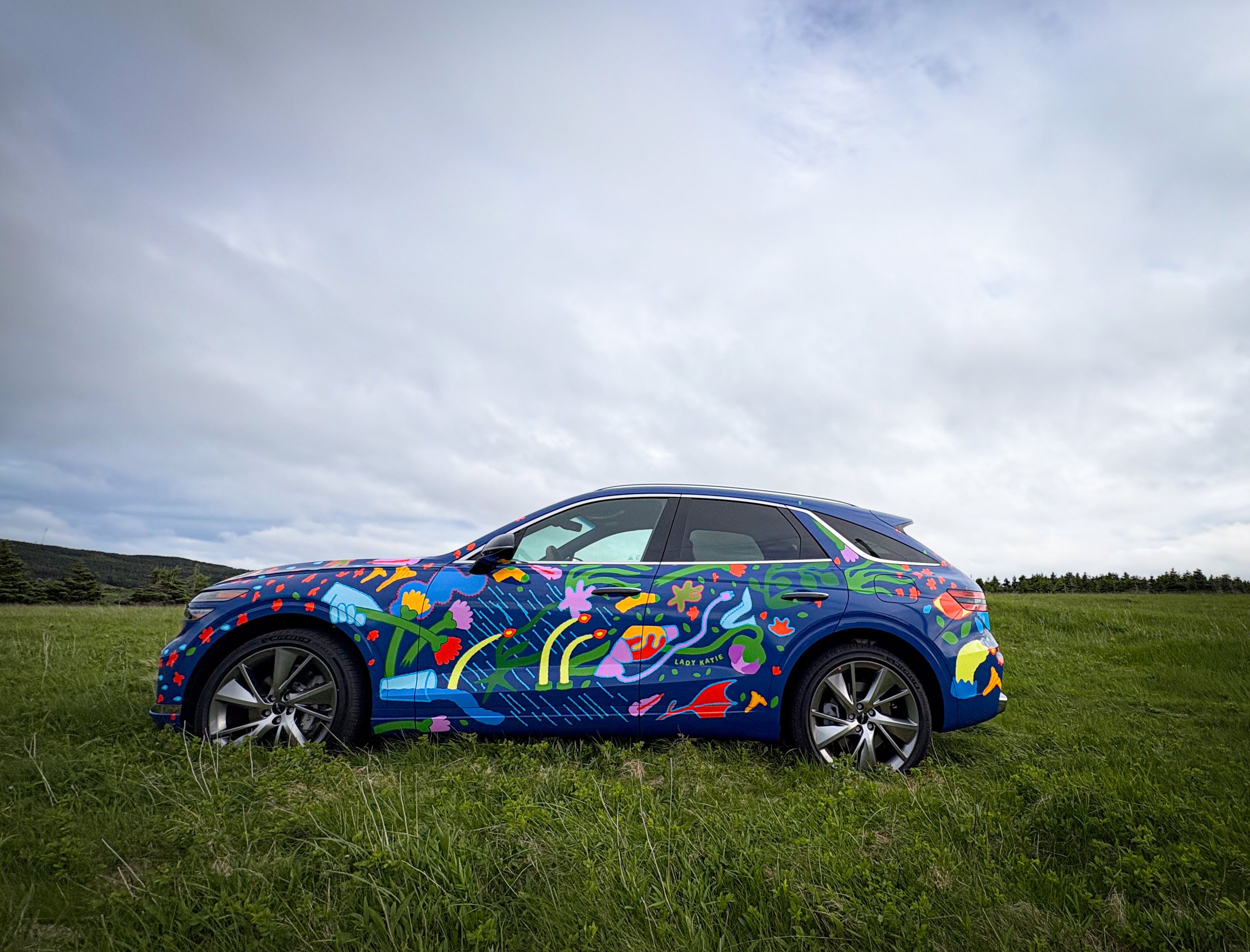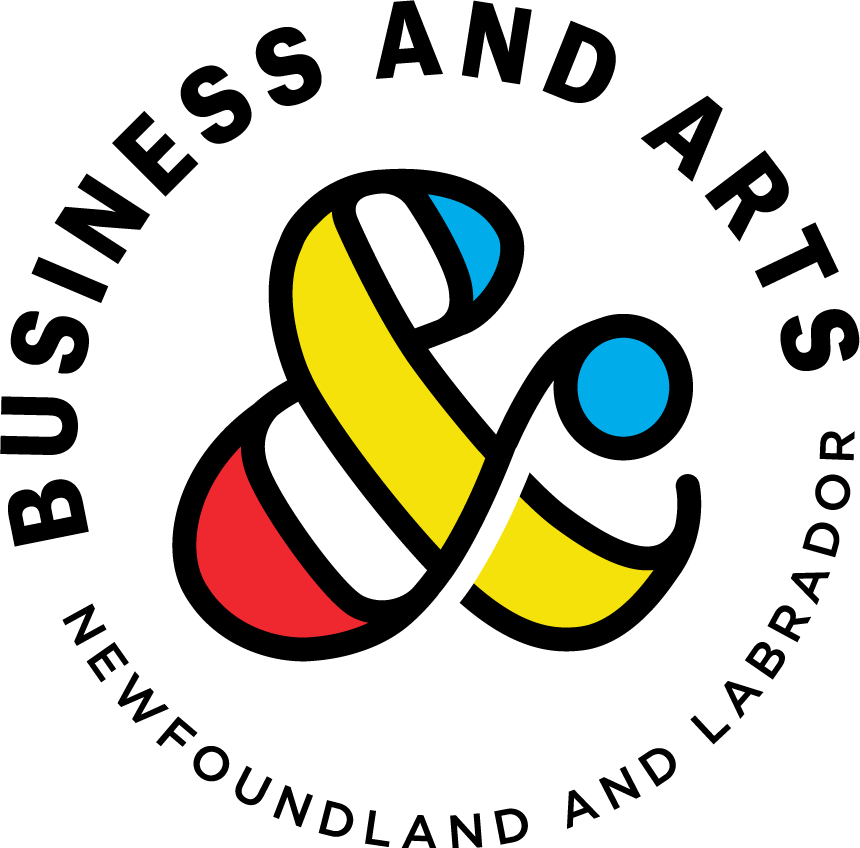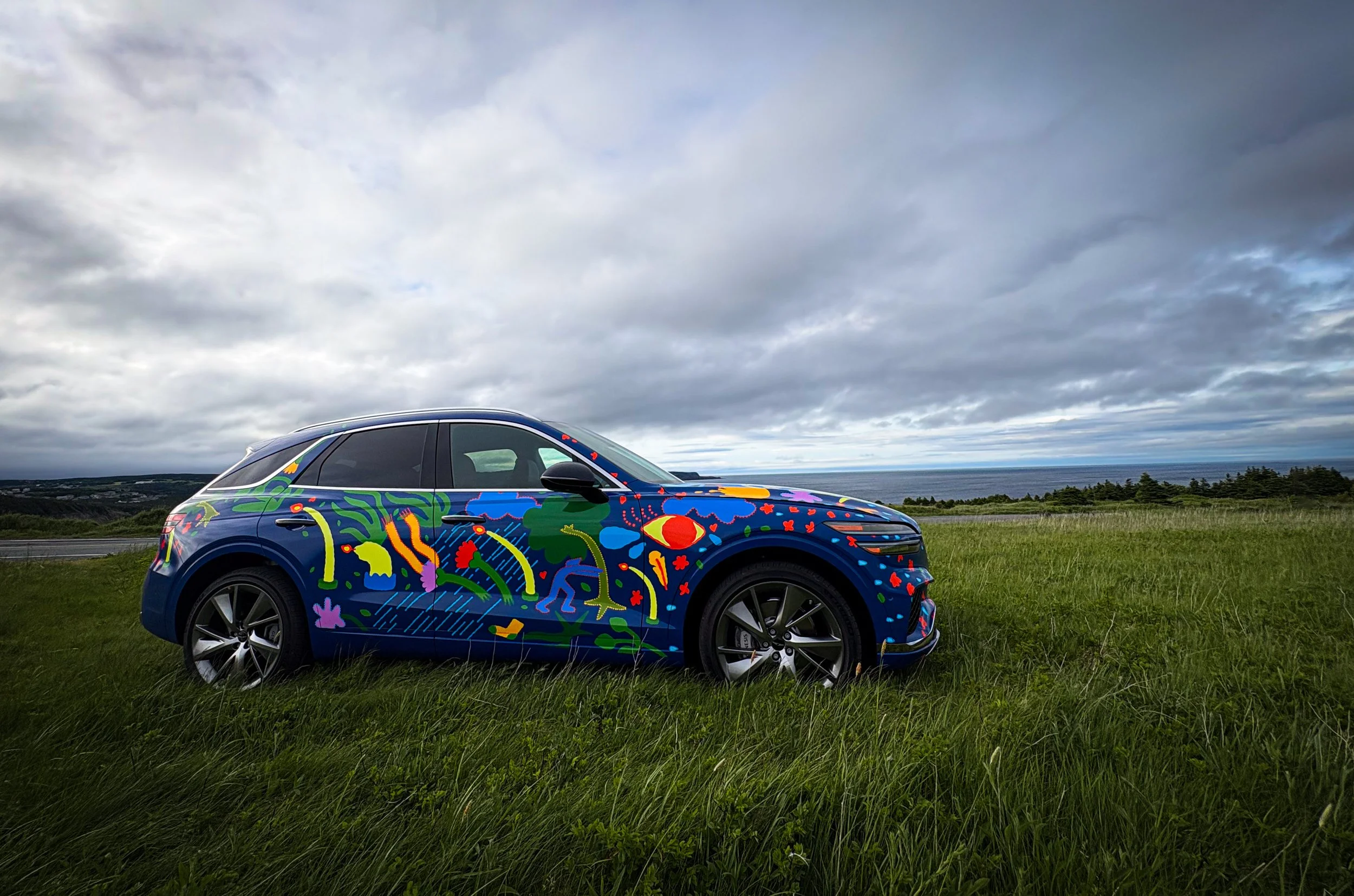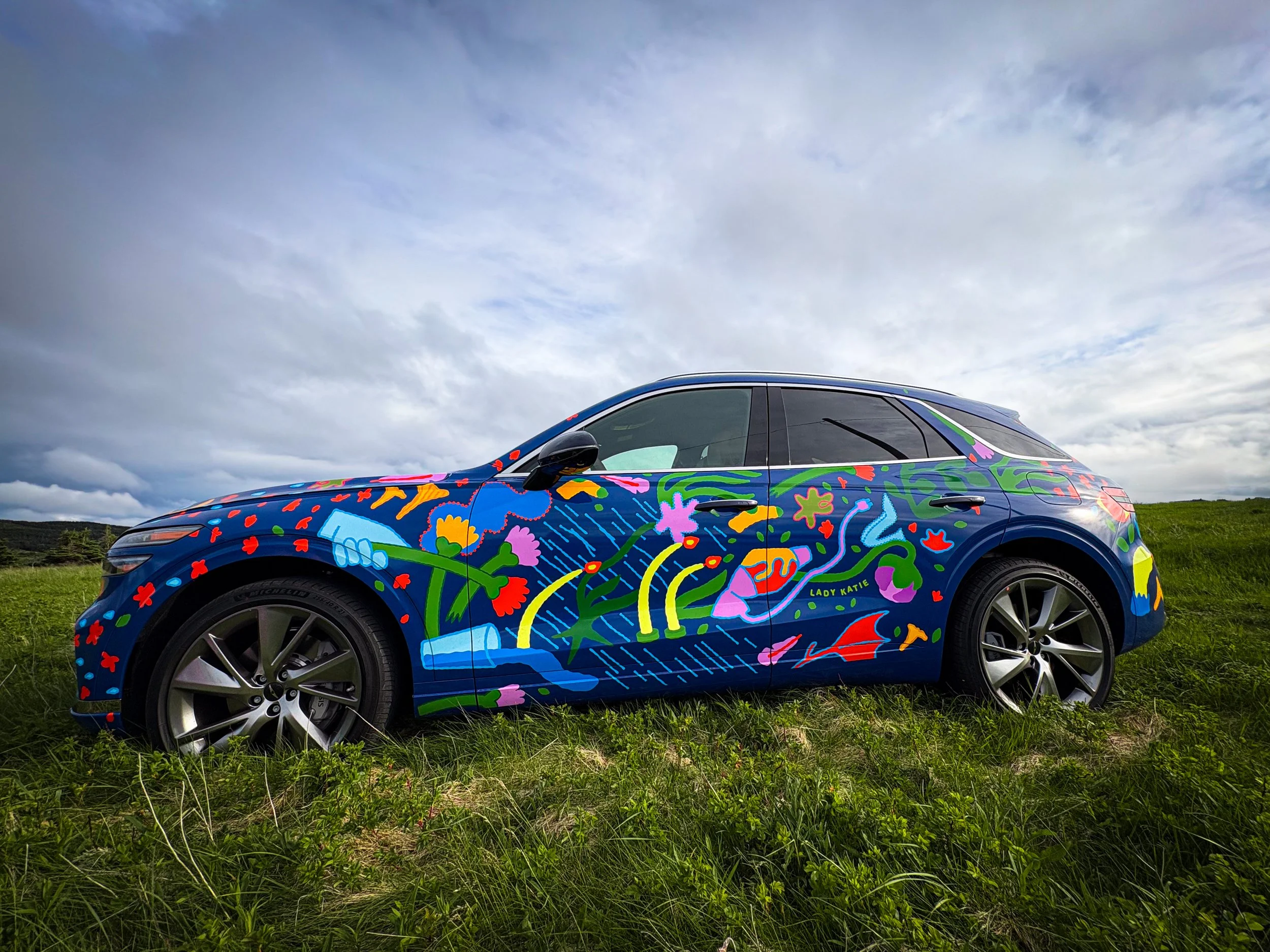
Case Study
Windy
Genesis Art Car
Windy
by Katie Hardy
The 2025 GV70 Art Car features a dynamic design of Newfoundland and Labrador's native pitcher plants, foliage, and tall candles rendered in deep jewel tones, all swept backward by wind to capture the unmistakable feeling of stepping outside on a particularly gusty day. This is the third Art Car commissioned by Business & Arts NL and Capital Auto Group.
Our Role
Photo: Genesis St. John's
Business & Arts NL and Capital Auto Group have collaborated on the innovative Art Cars initiative in 2021, 2023 and 2025, creating a unique tradition that transforms vehicles into moving canvases for local artists.
Our role includes:
Crafting a Call for Submissions and circulating it throughout the arts community in NL
Providing support to applicants, ensuring accessibility and clarity throughout the submission process
Collecting and presenting submissions to the client
Consulting on the artist selection process to align creative vision with brand objectives
Managing contract development and artist agreements
Acting as a liaison between the artist and client, ensuring a smooth process that adheres to timelines
Collaborating on the unveiling event and communications rollout to maximize community engagement
The result? An original design by a new artist each year that transforms Capital Auto Group vehicles into eye-catching movable pieces of public art. The Art Cars are driven throughout the province for at least a month, creating spontaneous encounters with art in communities across Newfoundland and Labrador. This mobile showcase turns heads and sparks excitement while demonstrating the company's commitment to creative community partnership.
Gallery
About the Artist
Katie Hardy is a graphic designer and multidisciplinary artist based in St. John’s, Newfoundland. While her primary focus is digital art, she also explores collage, clothing, textile design, and screen printing. Her freelance work includes album art, logos, event posters, and merchandise for local businesses, musicians, and artists.
She has collaborated with VOLTFUSE, a Newfoundland-based headwear and apparel brand, designing products, email campaigns, and social media content—all while earning her Graphic Design and Page Layout certificate from Concordia University. She also contributed to the branding and UI/UX design of HIVE, a local startup developing a web application.
Katie’s work has been published in Riddle Fence magazine, and her artwork has been featured in seasons 6 and 7 of Hudson & Rex.
My design concept centers around pitcher plants and tall candles, along with other NL foliage, blown backward by the wind, drawn in deep jewel tones to evoke the unmistakable feeling of stepping outside on a particularly gusty day. The design alternates between flowers, plants, and long, slender candles, which resemble each other but vary in colour and tone. The foliage adapts to the contours of a complex vehicle wrap, with branches and leaves extending beyond a straightforward left-to-right pattern. To emphasize the design on the hood and roof, I've incorporated larger petals, leaves, and natural NL elements while maintaining the same dynamic, swooping motion, so you can truly see them being pushed by the wind. Capturing that real-world force, like when backyard trees bend completely sideways, is a key part of this concept.
Artist Statement
Behind the Design: Spotlight on Windy
“At Genesis St. John’s, we’re dedicated to exploring powerful ways to engage with our community. With successful art car projects in the past with Marcus Gosse and Vanessa Iddon, we’re now excited to launch original artwork by Katie Hardy. In transforming our Genesis GV70 into moving art, this collaboration demonstrates how business and the arts can work together to create an instant impact. We extend our sincere thanks to Amy Henderson and her team for facilitating this partnership, and we encourage businesses across the province to connect with Business & Arts NL.”
Matt Kelland, Group Marketing Director, Capital Auto Group
Supported by
Let’s work together
If your organization is looking to engage with artists—whether for a single event or a province-wide project—we're here to help. Business & Arts NL’s Brokering Services ensure that your partnership with the arts is thoughtful, effective, and impactful.
info@businessandartsnl.com



















